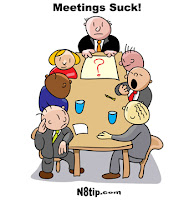Diagnosis: Organizational Alzheimer's
A deliveryman carrying a bouquet of flowers walks up and knocks on the door of a small home. When the lady of the house answers he says, "Are you the Widow Jones?"
The lady says, "Well, my name's Jones, but I'm no widow."
The deliveryman says, "Oh Yeah, just wait till you read the card!"
Ba dum dum crash!
As a business consultant, sometimes I feel like the guy delivering the flowers. I know the bad news (and the good) well before the intended recipient. And like the deliveryman, sometimes I have to repeat the bad news several times with ever decreasing levels of subtlety. I used to think the need for repetition was a communication issue -- perhaps I was unclear in my description of the root causes of the organization's problems.
My views are evolving though. I'm starting to think that the inability to process information that threatens the status quo is a root cause of root causes. Chris Argyris (1985) covered the topic of defe

